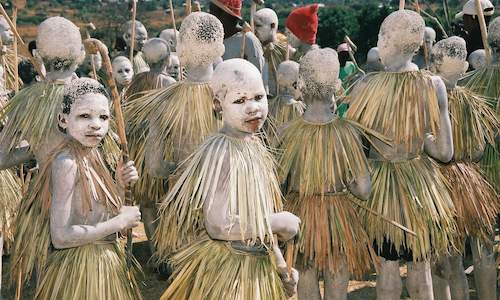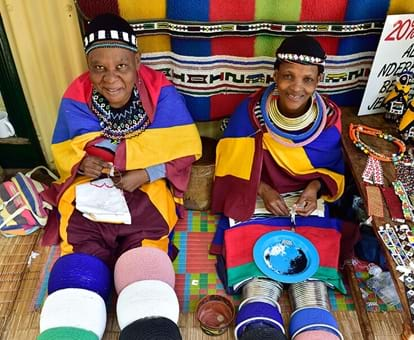How South African Culture Today can Save You Time, Stress, and Money.
How South African Culture Today can Save You Time, Stress, and Money.
Blog Article
How South African Culture Today can Save You Time, Stress, and Money.
Table of ContentsFacts About South African Culture Today UncoveredThe Only Guide to South African Culture TodaySome Known Factual Statements About South African Culture Today Top Guidelines Of South African Culture TodayThe Greatest Guide To South African Culture TodaySouth African Culture Today Can Be Fun For Anyone
An issue of importance in Zambian villages is the passing away of enjoyed ones. All members of the town placed money, time and effort with each other for the funeral of the deceased.Songs and dancing is an extremely important aspect of the Zambian culture. The different tribal systems have their very own dance forms; nevertheless, makishi is typical amongst all tribes.
Our South African Culture Today Statements
When it pertains to music, drums are used one of the most, with a variety of drumming events. In Zambia, bulk of individuals are Christian; Protestant and Roman Catholic. There are little groups of Muslims and Hindus, with the rest following neighborhood indigenous tribal beliefs.

South African heritage and culture is profoundly diverse, and contains various teams of individuals who each have their own customs and ideas. Having such a variety of individuals and societies is what makes South Africa so unique. In the true sense of the phrase, we are a rainbow nation.
South Africa has approximately three hundred thousand Portuguese people residing in it. Making it the 7th on the listing of nations with the most Portuguese individuals in it beyond Portugal. Portuguese is not just a society, yet it is likewise a language and a race. Portuguese people stem from the country of Portugal in Europe, nevertheless, because of Portugal (like numerous other countries in Europe) exploring the world and conquering other countries throughout the 15th 20th centuries, South Africa has what we call Portuguese South African's living in it.
Get This Report on South African Culture Today
Amongst the famous features of the topography is a plateau that covers nearly two thirds of the facility of the country. The plateau complicated climbs towards the southeast, where it climaxes in the Drakensberg variety, part of an escarpment that divides the plateau from the coastal locations. The Drakensburg includes Sparkling wine Castle, the greatest peak in the nation.
The region north of the Witwatersrand, called the bushveld, slopes downward from eastern to west toward the Limpopo River, which creates the worldwide boundary. The western section of the plateau, the middleveld, likewise comes down towards the west and varies in elevation in between the highveld and bushveld. Between the Drakensburg and the eastern and southern coast, the land comes down to the sea.
Nearer the coast there is a low-lying level called the eastern lowveld. Southwest of the plateau the nation becomes gradually much more dry, giving method to the hostile desert of the Great Karroo, verged on the east by the reduced, better watered plateau of the Little Karroo. Dividing the completely dry southern interior from the sandy coastal of the southerly coast and West Cape is one more array, the Langeberg.
Some Known Questions About South African Culture Today.
The nation's racially, ethnically, and politically split history has created national and subnational symbols that still function as symbols of the country, and others symbols that are approved only by certain groups. The monoliths to white inhabitant occupation and political supremacy, such as the Afrikaner Voortrekker ("leader") Monolith in Pretoria and the Rhodes Monument honoring the British colonial empire building contractor and Cape prime minister Cecil Rhodes, remain sectarian symbols.
The initial modern-day citizens were the San ("bushman") hunter-gatherers and the Khoi ("Hottentot") peoples, that rounded up animals (South African culture today). The San may have existed for hundreds of years and left evidence of their existence in countless old cave paintings ("rock art"). Bantu-speaking clans that were the ancestors of the Nguni (today's amaZulu, amaXhosa, amaSwazi, and vaTsonga individuals) and Tswana-Sotho language teams (today's Batswana and Southern and Northern Basotho) moved below eastern Africa as early as the fifteenth century

The two former republics of the Orange Free State and Transvaal (South African Republic) were developed by Afrikaner inhabitants who defeated and dispossessed the Basotho and Batswana. Lesotho would have been forcibly included into the Orange Free State without the extension of British security in 1869. The supreme marriage of the country resulted from the South African War (18991902) in between the British and both Afrikaner republics, which reduced the nation to wreck at the beginning of the twentieth century.
Afrikaners historically considered themselves the only true South Africans and, while approving full citizenship to all residents of European descent, refuted that condition to people of shade up until the discover this autonomous change of 1994. British South Africans retain a sense of social and social link to Great Britain without deteriorating their identity as South Africans.
The Buzz on South African Culture Today
The diversity and fragmentation within ethnic groups and the balance of tensions between those groups throughout the twentieth century protected against interethnic civil dispute. While intergroup stress over resources, entitlements, and political dominance stay, those conflicts are as likely to pit Zulu against Zulu as Zulu versus Xhosa or African versus Afrikaner.
From colonial India, British sellers and administrators brought the bent steel decorative roof coverings and slender lace job columns that still represent the verandas of cottages arounds and cities throughout blog the country. Holy places add a vital architectural facet even in the tiniest towns. Along with the skyrocketing steeples and timeless stonework of Afrikaans Dutch Reformed churches, Anglican churches, synagogues, mosques, and Hindu shrines give selection to the religious architectural scene.

Slaughtering and the developing of typical grain beer are necessary in safeguarding the engagement and goodwill of the forefathers that are taken into consideration the guardians of good ton of money, prosperity, and well-being. Indian areas maintain their native cooking customs and use them on Islamic and Hindu ritual and ritualistic occasions. Afrikaners and Coloured people gather at weekend breaks and unique events at multifamily bbqs called braais, where community bonds are enhanced.
Since this was the primary financial venture of both black Africans and white colonists, dispute between those teams focused on the ownership of grazing land and animals. In 1867, the largest diamond down payments in the world were uncovered at Kimberley in the west main location. The wealth from those areas assisted finance the exploitation of the best gold reef on the planet, which was uncovered on the Witwatersrand in 1886.
Unknown Facts About South African Culture Today
This resulted in misunderstandings and calculated misrepresentation in the ventures of white inhabitants and federal government officials with African principals throughout the early american duration (South African culture today). In the establishment of African gets, some aspects of common and mainly "tribal trust" land see post period were maintained, and also in white country areas, types of communal period were still exercised in areas with African neighborhoods
After the democratic makeover of 1994, programs for land restitution, redistribution, and reform were set up, but progression has actually been slow. The white minority still regulates eighty percent of the land. Following agricultural land intrusions in Zimbabwe, the Division of Land Matters has promised to speed up land redistribution.
Report this page